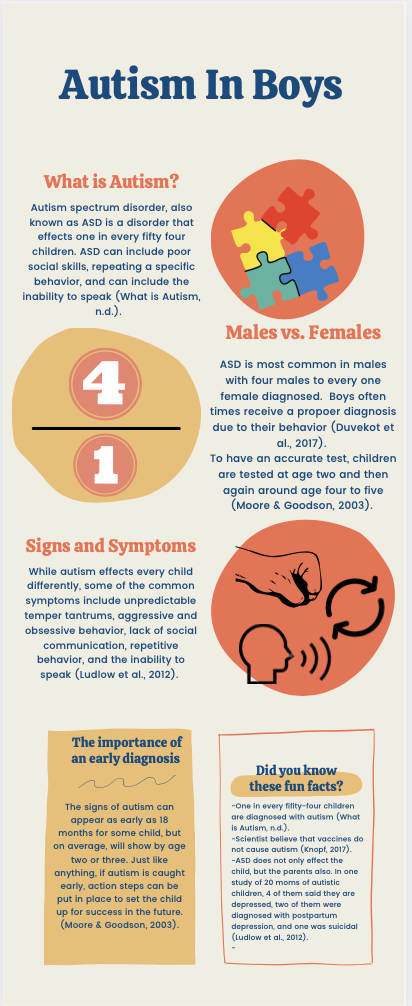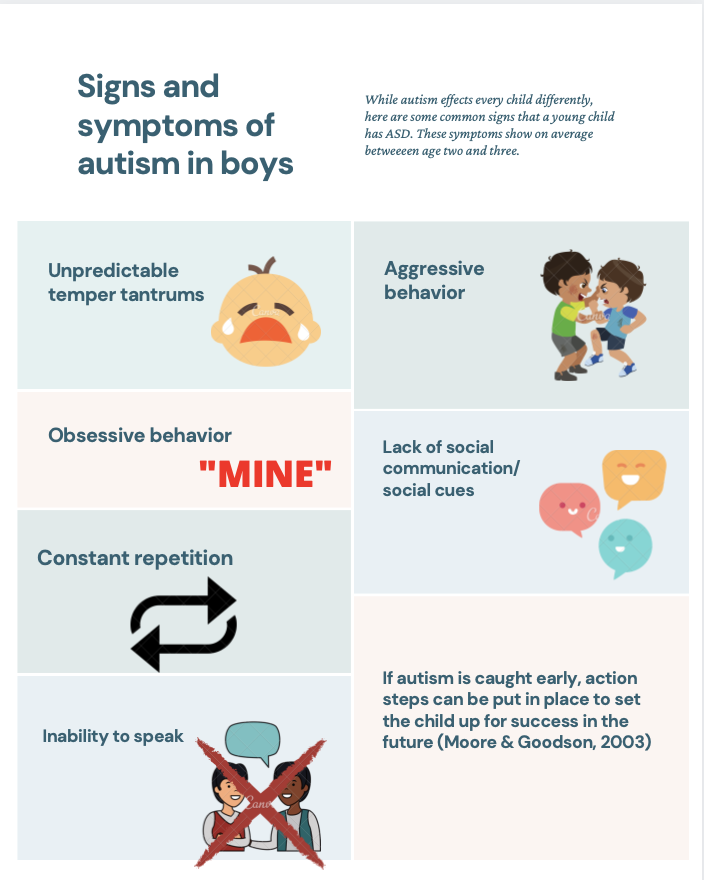How Autism Spectrum Therapies address nonverbal communication barriers
How Autism Spectrum Therapies address nonverbal communication barriers
Blog Article
Recognizing the Effect of Behavioral Autism on Life and Social Interactions
You might not recognize how deeply behavior autism affects day-to-day live and social interactions. People on the range frequently navigate a globe full of communication hurdles and sensory overload. These challenges can bring about irritation and isolation, affecting their partnerships and general well-being. Recognizing these subtleties is necessary for cultivating helpful atmospheres. What approaches can we apply to produce even more comprehensive rooms and meaningful connections? The answers may stun you.
Defining Behavior Autism and Its Attributes
Behavioral autism, commonly described as autism range condition (ASD), encompasses an array of conditions defined by obstacles in social communication, communication, and repeated habits. You could observe that individuals with ASD commonly struggle to interpret social signs, which can cause misconceptions in discussions. They might find it hard to develop eye get in touch with or take part in little talk, making social scenarios feel frustrating.
Interaction problems can manifest in different methods, from delayed speech advancement to a preference for utilizing fewer words. Recurring behaviors, such as hand-flapping or rocking, can work as coping devices to take care of stress and anxiety or sensory overload. These attributes can greatly influence day-to-day live, making it important for you to understand and support those with ASD. By acknowledging these traits, you can foster an atmosphere that promotes approval and urges efficient interaction, helping individuals with autism thrive in their everyday interactions.
The Spectrum of Autism: Recognizing Irregularity in Habits
Autism range disorder (ASD) isn't a one-size-fits-all medical diagnosis; it varies widely among individuals. You might encounter individuals who are very spoken and engage conveniently in discussions, while others may choose singular activities or communicate non-verbally.
Moreover, the method individuals with ASD react to sensory input can vary considerably; some could be overwhelmed by brilliant lights or loud sounds, whereas others flourish in boosting environments. The spectrum also includes differences in social interactions; some people may have a hard time to translate social cues, while others browse social setups with relative ease. Comprehending this irregularity is important, as it assists you value everyone's one-of-a-kind experience and dressmaker assistance to their certain demands, fostering a much more comprehensive setting for everyone.
Communication Challenges Encountered by People With Autism
When you communicate with people on the autism range, you may discover their one-of-a-kind communication difficulties. They often face difficulties with both verbal and nonverbal signs, which can affect their social communications. Understanding these barriers is necessary for cultivating better links and assistance.

Verbal Communication Problems
Many individuals on the autism range experience spoken communication problems that can substantially influence their daily interactions. Your pace, quantity, or tone might not straighten with social assumptions, triggering others to misinterpret your purposes. Acknowledging these obstacles can aid you and your assistance network establish techniques to enhance interaction and cultivate better links with others in your day-to-day life.
Nonverbal Communication Barriers
Spoken communication isn't the only obstacle individuals on the autism range face; nonverbal communication obstacles can be simply as considerable. These obstacles can lead to misunderstandings or false impressions of social signs, making communications feel frustrating or complex. By resolving nonverbal communication, you can locate strategies to boost your social experiences and enhance your general quality of life.
Social Communication Influences
Social communications can usually feel overwhelming as a result of the unique communication obstacles encountered by people with autism. You may have problem with translating social cues, making it difficult to understand sarcasm or body movement. This can lead to misconceptions or awkward minutes in discussions. Furthermore, initiating and keeping conversations might feel difficult, creating anxiousness in social situations. You may choose organized settings, making spontaneous communications uncomfortable. It's also common to experience problem in participating in little talk, which can hinder developing brand-new friendships. Acknowledging these challenges can assist you discover approaches to boost communication, such as practicing social skills in safe settings or utilizing visual aids - Aba Therapist Near Me. Recognizing your needs allows you to browse social interactions with greater confidence and convenience.
Social Interaction and Partnership Structure in Autism
While building connections can be testing for people with autism, understanding their special perspectives and interaction designs can foster purposeful connections. You may observe that numerous people on the range prefer straight interaction and may have problem with social hints or small talk. By being straightforward in your interactions, you can help develop a setting where they really feel comfy.
Take the time to observe and pay attention how they share themselves. This understanding can guide you in steering conversations more successfully. Participating in shared passions can likewise act as a bridge to much deeper links. Whether it's a leisure activity, a next preferred program, or a mutual interest, these common threads can open doors to friendship.
Life Regimen: Browsing Strategies and obstacles
Navigating day-to-day live regimens can be specifically challenging for people with autism, especially when unanticipated adjustments take place. You could discover comfort in having a structured routine, as it assists you expect what's next. When disturbances take place, it's normal to feel overloaded or nervous. To browse these challenges, think about implementing visual timetables or lists. These tools can supply clearness and reassurance.
Developing a regimen that includes sensory breaks can additionally be valuable. This aids develop an understanding atmosphere.
Lastly, technique mindfulness methods to manage stress and stress and anxiety. Simple breathing exercises or basing techniques can make a significant difference. By including these approaches, you can enhance your daily regimen and lessen disruptions, making life feel much more convenient.
Toughness and Capacities of People on the Autism Spectrum
Comprehending daily life regimens is just one facet of the autism experience. Many individuals on the autism range possess impressive staminas and capacities that set them apart. You might find that your interest to information is extraordinary, permitting you to succeed in tasks that require accuracy and focus. Your ability to think outside the box can bring about innovative services in different circumstances.
Additionally, your memory abilities typically beam, particularly in locations of passion. Autism Spectrum Therapies. This flair for maintaining information can make you a valuable resource in fields like modern technology, art, or scientific research. You might likewise display solid visual reasoning, enabling you to picture intricate principles and fix issues creatively
Additionally, your special viewpoint on the world can foster empathy and understanding in others, improving social communications. Welcoming these staminas not just improves your confidence but likewise helps others appreciate the varied skills you give the table.
Developing Comprehensive Atmospheres for Individuals With Autism
Producing inclusive environments for individuals with autism begins with developing sensory-friendly areas that satisfy their special demands. You can likewise foster possibilities for social communication, aiding to develop connections and relationships. By making these modifications, you'll add to an extra welcoming environment for everyone.
Creating Sensory-Friendly Spaces
While developing sensory-friendly spaces, it's essential to show on the special demands of people with autism. Beginning by picking calming colors and soft lighting to develop a relaxing atmosphere. Include silent areas where people can charge and retreat when bewildered. You'll want to reduce loud sounds and distractions, utilizing soundproof materials or white noise machines to help keep harmony. Think about responsive components like soft materials or fidget-friendly things that can provide comfort. Ascertain that areas are versatile, permitting very easy reformation to suit different activities. Consist of visual schedules or clear signs to help people browse the room with confidence. By thoughtfully integrating these aspects, you can produce an inviting atmosphere that supports sensory demands and promotes overall well-being.
Advertising Social Interaction Opportunities
Creating sensory-friendly spaces not just addresses private convenience but also establishes the phase for significant social communications amongst people with autism. To advertise these communications, develop comprehensive environments that blog invite involvement. Organize organized activities, like art courses or group video games, that encourage collaboration without frustrating sensory input. Usage aesthetic aids and clear interaction to aid everybody involve pleasantly. Urge peer mentoring, coupling individuals with autism with helpful peers that can assist them via social situations. Furthermore, think about organizing routine neighborhood occasions that celebrate neurodiversity, promoting acceptance and understanding amongst all participants. By applying these strategies, you can boost social opportunities, assisting individuals with autism construct relationships and enhance their social skills in a risk-free, inviting atmosphere.

Frequently Asked Inquiries
Exactly How Can Buddies Assistance Someone With Behavioral Autism?
You can sustain a good friend with behavioral autism by being individual, listening actively, and appreciating their borders. Involve in tasks they enjoy, connect freely, and develop a comfy setting where they feel valued and recognized.
What Resources Are Readily Available for Moms And Dads of Kid With Autism?
You can discover numerous sources for moms and dads of children with autism, consisting of assistance teams, educational web sites, and regional social work. Connecting with various other moms and dads can additionally supply important insights and shared experiences to aid navigate challenges.
Can Behavioral Autism Modification Gradually?

Yes, behavior autism can transform in time. You may notice shifts in interaction, social skills, and behavior as your child expands. Early treatment and support usually play crucial functions in these developing modifications.
How Do Sensory Sensitivities Influence Life?
Sensory sensitivities can make day-to-day experiences frustrating. You might battle with bright lights or loud noises, bring about stress and anxiety or avoidance. Locating environments that accommodate your demands can considerably boost your convenience and total life.
What Prevail Misconceptions About Behavioral Autism?
You might assume behavioral autism only affects interaction abilities, however it's even more complicated. Many presume individuals lack empathy or knowledge, which isn't true. Recognizing try this website these misunderstandings aids foster acceptance and assistance for those on the range.
Behavior autism, commonly referred to as autism range problem (ASD), incorporates a variety of conditions defined by difficulties in social interaction, communication, and recurring habits.Social communications can frequently feel overwhelming due to the one-of-a-kind communication challenges faced by individuals with autism.Creating sensory-friendly spaces not just addresses individual comfort but likewise establishes the stage for meaningful social communications amongst individuals with autism. Urge peer mentoring, coupling people with autism with helpful peers that can direct them with social circumstances. By carrying out these approaches, you can boost social chances, assisting people with autism build relationships and strengthen their social abilities in a safe, welcoming environment.
Report this page